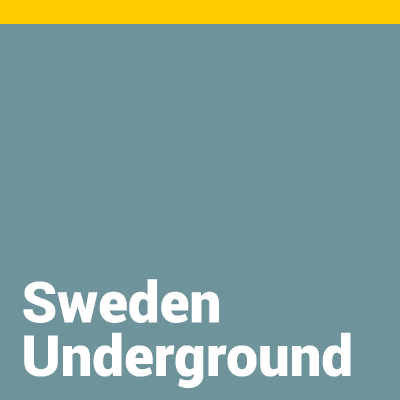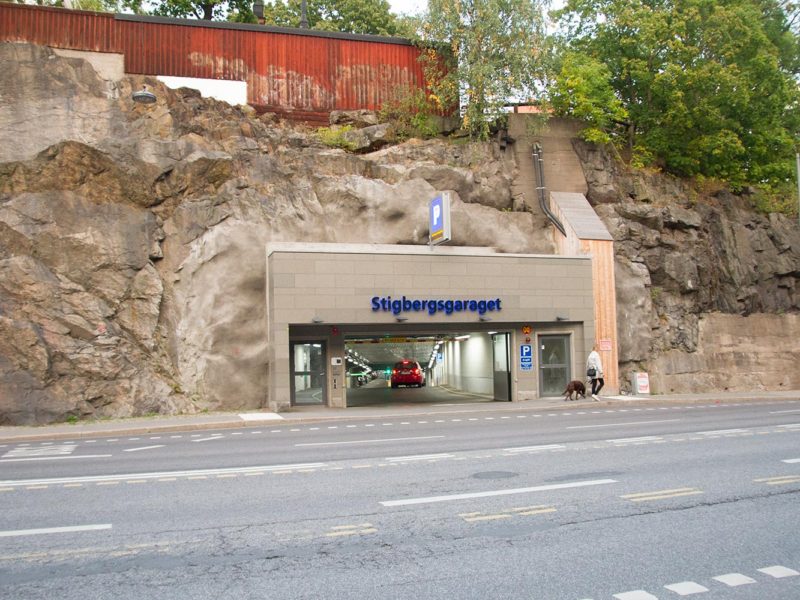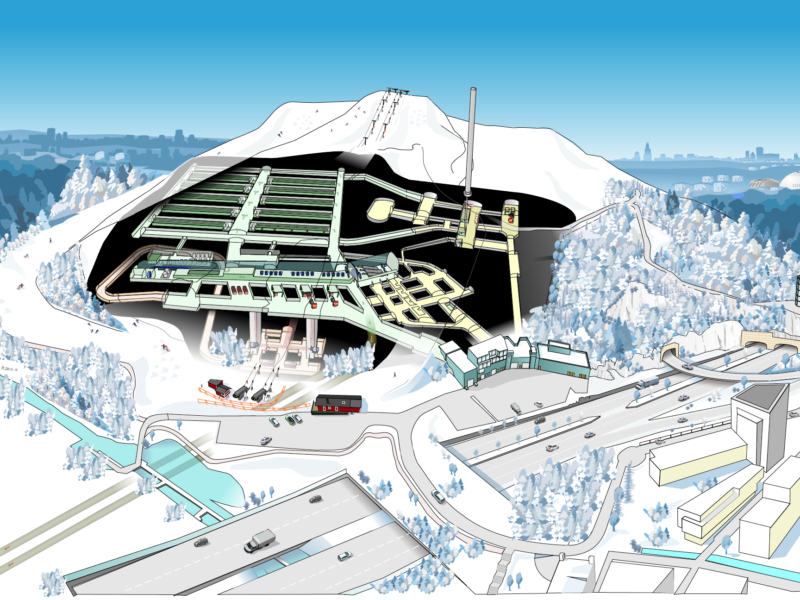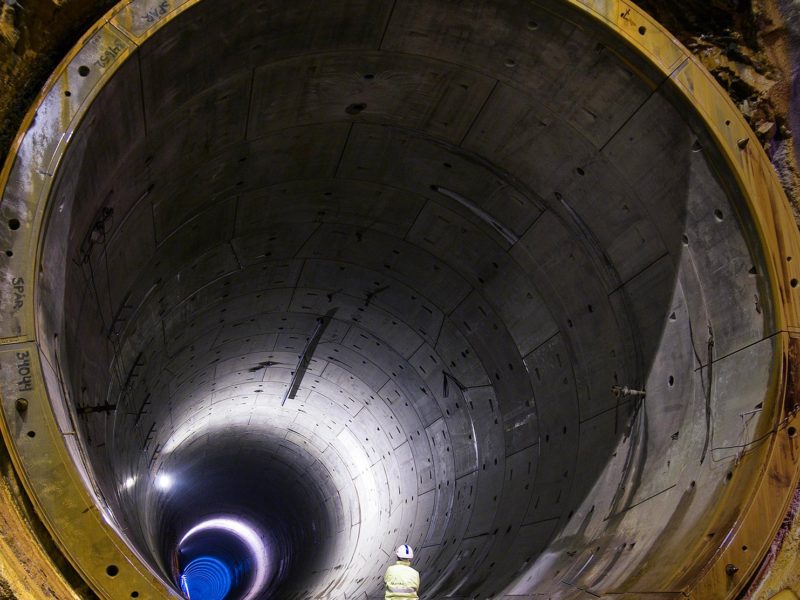Arlanda Airport Underground Railway Stations
The Arlanda Express connects central Stockholm with Arlanda Airport, Sweden’s busiest airport. High-speed trains, travelling at 200 km/h, cover the 40-km distance in just 20 minutes. The project involved the construction of three cavern stations below the airport, with direct access to the terminals.

The aim of this key infrastructure project was to create a fast, reliable and environmentally friendly connection between central Stockholm and Arlanda Airport. A-Train AB was established to plan, design, finance and construct the new railway system called Arlanda Link. Constructing station caverns under the existing terminals enabled the journey and transfer time to be shortened, thereby making the railway connection an attractive alternative for commuters and air travellers. If the airport station had been constructed above ground some distance from the terminals, a connection service would have been needed, resulting in longer journey times and more inconvenience for passengers. This would have made the Arlanda Link project less attractive and it would not have been financially viable.
The Arlanda Line rail link from central Stockholm to Stockholm-Arlanda Airport has a total of 5 million journeys per year.
The line, operated on a purely commercial basis, has also been opened up to standard commuter train traffic, thereby increasing the number of commuters travelling by rail to the airport. The Arlanda Line rail link from central Stockholm to Stockholm-Arlanda Airport has a total of 5 million journeys per year. No goods trains are allowed because of safety considerations in the underground stations. One of the stations is dedicated to regional and long-distance trains connecting Stockholm with northern Sweden.
Comprehensive facility
The infrastructure project involved the construction of a 19-km railway that connects the airport to the main line between Stockholm and northern Sweden. A network of tunnels and three station caverns were built directly underneath the airport terminal buildings, Arlanda South (Terminals 2-4), Arlanda North (Terminal 5) and Arlanda Central beneath Sky City.
Rock engineering aspects
The excavation was carried out using conventional drilling and blasting. Three different tunnel sections were constructed: single-track tunnels (cross sectional area 54-65 m2), double-track tunnels (95-105 m2), and station sections (218 m2). The primary construction challenge was the close proximity of the airport terminals.
Rock conditions were generally favourable, comprising an intensely foliated mica schist with local weakness zones. The rock cover between the tunnel roof and the airport terminal in some sections was as little as 10 m. Furthermore, the station tunnels were constructed beneath foundations supporting the heavy terminal building. Damage caused by blast vibrations was identified as a significant risk, so a detailed survey of the airport terminals was required before blasting. A comprehensive blast vibration monitoring programme was implemented and the size of the blast rounds was strictly regulated.
Damage caused by blast vibrations was identified as a significant risk, so a detailed survey of the airport terminals was required before blasting. A comprehensive blast vibration monitoring programme was implemented and the size of the blast rounds was strictly regulated.
BTO
The project is Sweden’s first major BTO project (Build, Transfer and Operate) with mainly private funding. When the link was completed in 1999, the railway facilities were transferred to the Swedish Government. In return, A-Train AB leases back the link, based on an exclusive concession which gives the right to operate trains on the link until 2040. Arlanda Express is owned and operated by A-Train AB, which also planned, financed and constructed the new Arlanda rail link.
The line is unique in Sweden in that it is profitable, costs for the construction of the railway and stations included.
Project Facts
| Project type | Rail traffic tunnel |
|---|---|
| Time of Construction | 1995-1999 |
| Project size | SEK 3,3 billion (cost, monetary value for 1995) |
| Excavated rock (m3) | 800.000 |
| Owner | Arlandabanan Infrastructure AB |
|---|---|
| Project Manager | Arlanda Link Consortium (ALC) |
| Main Designer | Linkprojektörerna |
| Main Contractor | NCC, Siab, Vattenfall, Mowlem and Alstom |
Contact

Two-thirds of households in Stockholm have access to a car, and around 15 percent of road surfaces are used for parking. Space is at a premium in the city, so there is a strong case for replacing roadside parking with underground car parks. ...
The municipal water company, Stockholm Vatten, has played a significant role in a growing Stockholm since 1861, when the first water treatment plant was built and households began to connect directly to the public water supply. ...
The route of the West Coast Line over the Hallandsås Ridge had been a bottleneck for nearly a century....





